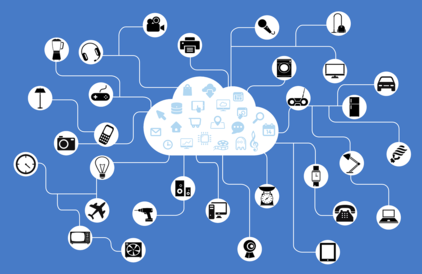The Internet of Things - The newest ally in the war against food insecurity?

The Internet of Things - The newest ally in the war against food insecurity?
On a global scale, we believe it is fair to say that food production is neither sustainable, nor secure.
Whilst globally we are now producing more food than ever before due to advances in production technology (‘the green revolution’), this food does not always make it to the people who need it the most . Indeed, globally, 795 million people do not have enough food to lead a healthy active life . In other words, whilst we have more power to improve availability of food globally, we are struggling with ensuring uniform access. This is compounded by the fact that many parts of the world suffer from chronic obesity and staggering food waste. As much as a third of all food in the world that is fit for human consumption is wasted at some point in the supply chain.
Not only do we need to improve our current system, we also need to contend with a number of projected challenges. With increasing global population estimated to reach 9.6 billion by 2050, we have to increase our food production without causing further damage to the natural ecosystems upon which our ability to produce food depend. We need to do so in the face of climate change which is increasingly influencing what food we can produce and where. We also have to contend with significant societal change, for example, growing middle classes and ageing populations globally, who demand ever more convenient and resource intensive foods.
To overcome these challenges we need more information on how food is being produced, where it is in supply chains, what the state of that food is, and where it is needed.
Enter the Internet of Things.
The IoT is a breakthrough technology when it comes to improving sustainability across the food supply chain. Put simply, it refers to any device that can be connected to the internet where it is able to collect and transmit data, potentially allowing a limitless web of remote sensors. It is about big data generation and more, about getting that information to the right people at the right time and even about calibrating real time decisions autonomously.
This is not a Sci-Fi scenario, but increasingly reality. For example we already see:
- Smart farming – farmers have real-time access to vital data concerning water usage, soil quality and energy usage to compare their crop yields to those of other growers both in their regions and beyond .
- Smart Trucks – To track and locate the consignment of food, monitor temperature, record tampering, protect the consignment, and to provide information on disruptions ahead and alternative routes .
- Smart Factories –real-time data of stock from farm to fork, predictive maintenance of equipment and consistent remote monitoring of stock conditions from a health as well as quality perspective4.
- Smart Supermarkets – Technologies that can assist consumers with choosing healthy, allergen free, nutritious, special-diet (diabetic, low salt, etc.) food, send alerts to fill empty shelves and automatically place orders with suppliers or depots .
- Smart Kitchens- Sensors to detect when meat and produce has gone off as well as refrigerators which can alert owners when food stocks are running low and provide recipes to use up remaining food (thus tackling food waste) .
As these existing examples of applications of the IoT demonstrate, through careful monitoring of resource consumption and analysis of enormous amounts of data, the IoT can potentially play a significant role in improving efficiency and reducing waste across our food supply chains. In coming years, this trend is only likely to continue. It is, however, about more than efficiency: the IoT offers a way of making food supply chains more responsive to the changing socio-demographics anticipated in the near future, from ageing populations, to changing lifestyles. As a result, the IoT may well be just the vital conduit our food systems require to become more sustainable, secure and responsive.
- http://www.fao.org/docrep/x0262e/x0262e06.htm
- Global Panel of Agriculture and Food Systems for Nutrition, http://glopan.org/climate-change
- Beecham Research, Towards Smart Farming, Executive Summary, https://www.beechamresearch.com/files/BRL%20Smart%20Farming%20Executive%20Summary.pdf
- http://foodindustryexecutive.com/2016/04/the-internet-of-things-and-the-future-of-food/
- https://blogs.microsoft.com/iot/2016/04/08/italian-grocery-co-op-develops-supermarket-of-the-future/
- Internet of Things and its role in Smart Kitchen: https://www.researchgate.net/publication/287878645_Internet_of_Things_and_its_role_in_Smart_Kitchen